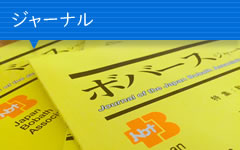日本ボバース研究会からのお知らせ
スウェーデンでの上級講習会報告
スウェーデンでの上級講習会報告
国際部よりお知らせ
スウェーデンでの上級講習会 報告
スウェーデンのマーストランドで開催された上級講習会に塚田直樹先生(Rehabilitation Plus)、古澤浩生先生(リハビリテーション天草病院)、関根陽平先生(リハビリテーション天草病院)、宮沢規章先生(上伊那生協病院)の4名が参加されました。今回、宮沢先生から以下の感想をいただきました。
今回、スウェーデンのマーストランド(会場:Neuroplastiskt Centrum AB)で開催された上級講習会を受講しました。テーマは「Trunk control ; a necessity or a luxury in neurological rehabilitation?」で、講師はLine Syre先生(スウェーデン)とMonica Morelli先生(イタリア)の2名でした。受講者は18名で日本の他、エジプト、イタリア、デンマーク、スウェーデン、フィンランド、ノルウェーから参加をしていました。
今回の受講動機について、ここ数年のコロナ禍の中であってもIBITAを中心にBobath conceptは止まる事なく発展し続けていることを肌で感じていました。今回、本講習会テーマでもある姿勢制御及び体幹コントロールの背景となる神経生理学について、どのように解釈し探求するかという点を学びたかったことや、神経学的障害を持つ患者さんに対する治療として何を大切にして個別のクライエントに向き合っていくのかを自身で再度確認をしたかったため、海外ACの受講を決めました。
本講習会について、近年、姿勢制御の中心的側面である体幹コントロールについて利用できる文献が大幅に増加している中、「これらをどのように臨床に活かすのか、また体幹部そのものは特別に注目されるべき部位なのか?」といった疑問に対し、デモンストレーション、講義・実技、治療実習の中でご指導いただきました。体幹に対する四肢・頭頚部とのコネクション、それを担う筋の長さ(Length)が強調され、コアコントロール、バランスコントロールのための構成要素を環境設定も重要視しながらタスクの中で提示していただきました。また、両女史のデモンストレーションではクリニカルリーズニングや、繊細なHands onから日毎の変化を明確にご提示いただき圧巻の一言でした。Hands on一つにしても「Not passive」といったように、いかに対象者をActiveにしていくか(Facilitation)を経験できる非常に有意義な時間でした。
私自身、海外でのコースへの参加は初めてであり、英語スキルも踏まえて不安は大きいものでありましたが、講師や他の受講生ら北欧メンバーは温かく、自身の拙いスキルに対してもディスカッションの幅を広げてくれたため、ホスピタリティーを大いに感じることが出来た素晴らしい講習会になりました。



(上伊那生協病院 理学療法士 宮沢規章)
News from the International Division
Report on the Advanced Course in Sweden
the Advanced Course was held in Marstrand, Sweden. Mr. Naoki Tsukada (Rehabilitation Plus), Mr. Hiroo Furusawa (Rehabilitation Amakusa Hospital), Mr. Yohei Sekine (Rehabilitation Amakusa Hospital), and Mr. Noriaki Miyazawa (Kamiina Co-op Hospital) participated in this course. We received the following comments from Mr. Miyazawa.
I attended the Advanced Course held in Marstrand, Sweden (Venue: Neuroplastiskt Centrum AB). The theme was “Trunk control; a necessity or a luxury in neurological rehabilitation? “ . There were 18 participants from Japan, Egypt, Italy, Denmark, Sweden, Finland, and Norway. The Bobath concept, especially IBITA, has continued to grow and develop, even in the Covid-19 crisis of the past few years. The motivation for attending this course was that I wanted to learn how to interpret and explore the neurophysiology of postural control and trunk control, which is also the theme of this course, and to reconfirm for myself what is important in treating individual clients with neurological disorder. In recent years, the available literature about trunk control, which is a central aspect of postural control, has increased significantly. We do not fully understand how they should be utilized in clinical situation or whether the trunk is an area of special focus. The instructors guided us on these points through demonstrations, lectures, practical exercises, and treatment practices to address these questions.
The connection between the trunk and the extremities, head and neck, and the length of the muscles were emphasized, and the components of core control and balance control were presented in the context of tasks including environmental settings. The demonstrations by the two ACI were also impressive, as they clearly showed the daily changes based on clinical reasoning and subtle hands-on skill. It was a very meaningful time for me to experience how to make patients active (facilitation), as in “Not passive” even in a hands-on situation.
It was the first time for me to participate in a course abroad, and I was very anxious about my English skills, but the lecturers and other participants in Scandinavia were very warm and leaded the discussion about my poor skills. It was a wonderful course for me and I could feel a lot of hospitality.
(Noriaki Miyazawa, Physical Therapist, Kamiina Co-op Hospital)




